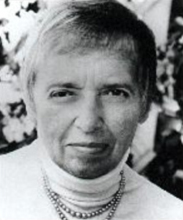Albert Speer (http://en.wikipedia.org/wiki/Albert_Speer), Hitler’s pet architect and wartime armaments supremo, has always been regarded differently from the rest of the Fuhrer’s henchmen. The ragbag of embittered veterans and political terrorists, shadows of Hitler himself, had little in common with the respectable and prosperous Speer, too young to have fought in the First World War, too fastidious and bourgeois for street-brawl politics. After 1945 Speer played the part of the corrupted technocrat, the unpolitical expert blinded by Hitler’s light until it faded in the last year of war. At the Nuremberg Trials he was the clever corporate manager made to take the rap for the directors’ indiscretions. He acted out the role superbly: yes, he did accept his responsibility for aiding what he now saw as an evil cause; no, he was not a warmonger, a murderer or a racist. The Allied judges believed him, just. He was not hanged. He got twenty years in Spandau.
It was in jail that Speer drafted the manuscripts that were to make him famous again in the Seventies: his memoirs. Inside the Third Reich and Spandau: The Secret Diaries, a remarkably powerful expression of his prison existence. It was the second of these books that attracted Gitta Sereny (http://www.telegraph.co.uk/news/obituaries/9339865/Gitta-Sereny.html) to the Speer phenomenon. She sensed in him an inexpressible sadness. When in the course of her work as a journalist in the late Seventies their paths crossed, she began a series of conversations with Speer which lasted three years. They grew to respect and like each other. Sereny saw an opportunity to answer the Speer riddle: ‘how a man of such quality could become not immoral … but, somehow infinitely worse, morally extinguished’.
She is in a better position than most to find the answer. To three years of notes from discussions in which Speer became unusually candid she has been able to add the drafts and notes for all his books, the 25,000 letters written from Spandau, and interviews with Speer’s family, former colleagues and associates from prison days. It took her 14 years – Speer died in 1981 – to get her material into book form. It is unlikely that anyone else will ever have access to so intimate and so frank a record.
The result is not a biography in any conventional sense. We are not even told the day of his birth. The year-by-year record is patchy; the book jumps between past and present, confusingly so at times. Speer’s own story matters only to the extent that it contributes to unravelling the central paradox. Nor is the book history in any accepted sense. There are brief historical asides which betray a rather hazy grasp of the context. Sometimes it is plain wrong (‘occupation of Czechoslovakia’ in July 1938; Hindenburg as ‘Hitler’s most illustrious supporter’). There are virtually no footnotes (a pity, given the value of the archive), and it is difficult to be clear from the text whether Speer is talking, Sereny is paraphrasing him, or a conversation or letter is being quoted. As a source for historians these things matter. Nevertheless, the enigma of Speer is thoroughly probed. Out of hundreds of hours of interviews, Sereny unravels the threads of his personality: the genius that made him indispensable to the German war machine, the conscience that drove him to repent, and the emotional wounds that made him susceptible to Hitler’s lethal magnetism. Read as an inside account of the Third Reich, or as a revelatory unsparing yet compassionate study of the human capacity for evil, Albert Speer: His Battle with Truth (1995) is a triumph.
784 pages in Picador paperback edition
ISBN 978-0330346979
Albert Speer Gitta Sereny


